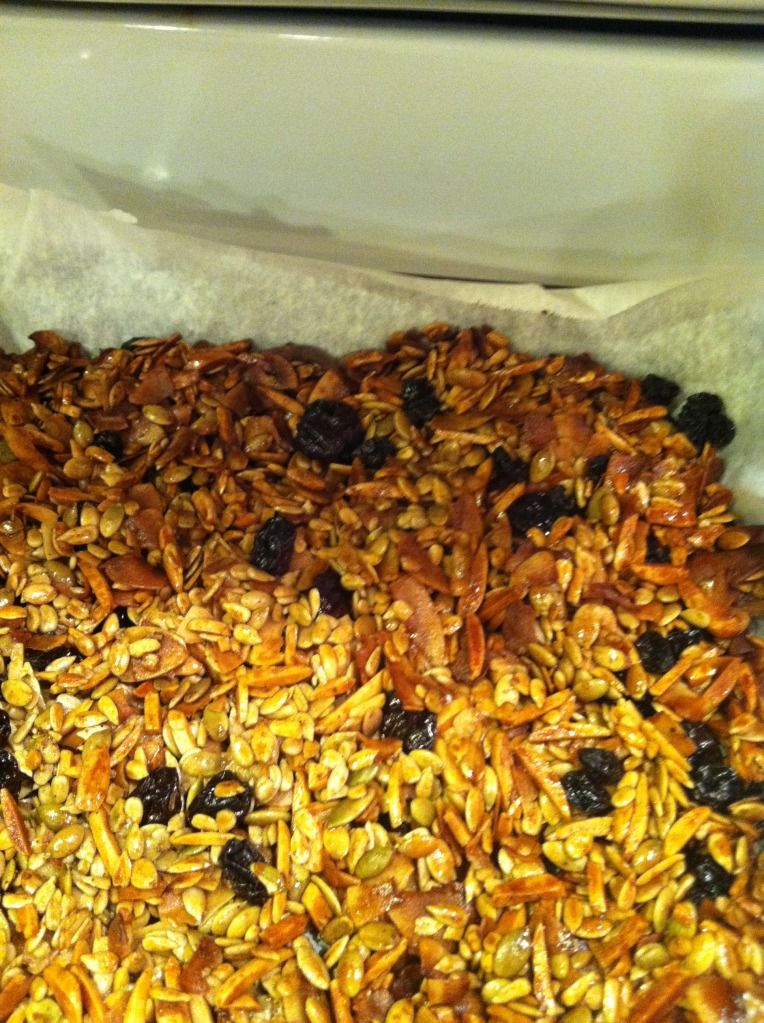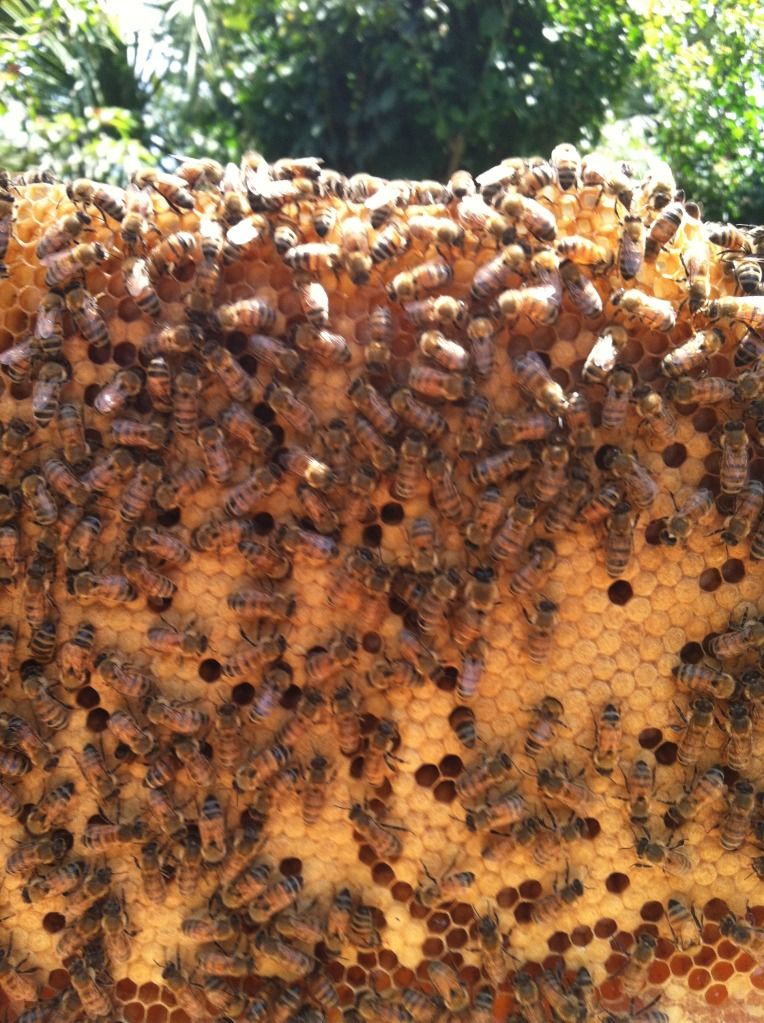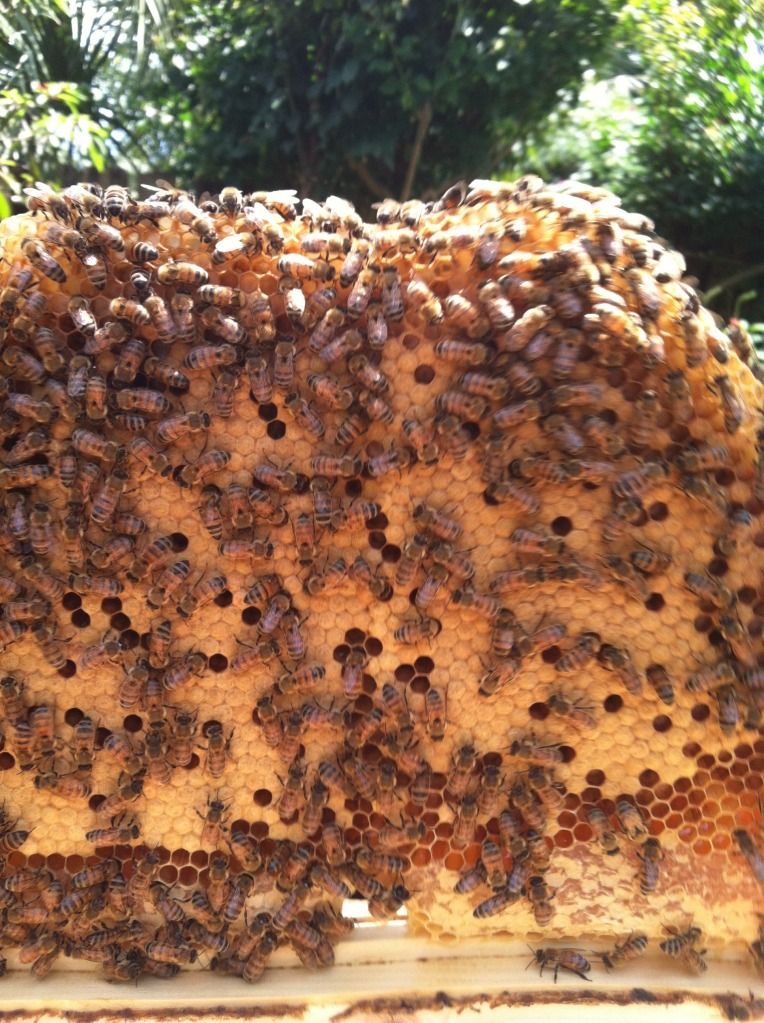Today I went into the hives again to check on my splits. I believe that Hive #1 finally has a queen. I didn’t see the queen but I did see bars with various stages of brood. I have great difficulty with my eyes seeing the eggs. At first I saw one top bar that had mostly drone cells in the middle and thought maybe I had a laying worker. Then I actually saw a fairly good laying pattern of capped brood, open larvae and eggs. There were no queen cells present. The hive is up to 20 bars and the population looks much better. There are some bars towards the back that I should be able to harvest for honey in a few weeks. I did see a few small hive beetles when I first opened up the hive that scattered. Now that the population will be growing again hopefully the small hive beetles will remain under control.
I think Hive #2 has a queen. Again if I had better eyes I might be able to see the eggs better. I didn’t actually see the queen but I did see a fairly good laying pattern of capped brood and open larvae. I did see many bars with nectar and pollen. What I am trying to decide, is if what I am seeing is from the last queen that was present and suddenly disappeared, or is this new brood and larvae from the new queen. I think I saw some eggs, but I am not sure. I need to call my optometrist to see if she can fit me for a prescription that would help me see better in the hive. Progressive lenses and glasses are not good as I constantly have to adjust my eye position to see. I did add two bars of brood from hive #4 just in case they need eggs and brood to make a queen. I am not 100% sure this hive has a queen but all the queen cells that were present last inspection are gone. There are several bars towards the back of the hive that I should be able to harvest soon for honey!
Hives #3 and #4 are doing well. Hive #4 has a great queen. She is laying very well. Her abdomen is very elongated and she looks really good, and her laying pattern is very even. When I was in Albuquerque taking classes, one of the pearls I took away was the importance of rating the queen in each hive. Since I only have 4 hives it is not difficult to remember, but I have a book that I keep track of my hives and their progress each and every time I go into the hives. This book has been very important during these divides that I initiated this spring. I have been able to go back and read my notes and review what has been happening in the requeening process.
As I was working my hives today I was thinking about some of the things that Les Crowder talked about when he was teaching the classes. I found myself positioning the bars according to worker cells and drone cells. I moved all drone cells towards the back of the brood nest. I tried to keep the brood nest together. I moved darker comb and honey comb toward the back. I also moved bars with crooked or irregular comb towards the back so I could harvest them first. I took some bars that had double comb, and used the leaves from a plant to brush the bees off, and cut the comb off and repositioned it on an empty bar. I repositioned or reoriented bars with fat comb and made sure I position a straight comb in between. I came away from Albuquerque with many pearls of wisdom. Remembering them all and applying them will hopefully make me a better beekeeper. I am very grateful that I had the opportunity to attend the classes. I look forward to attending more classes in the future. I have heard many 30 year experienced beekeepers say they never stop learning as a beekeeper.
I am cautiously excited that maybe I have 4 hives that are finally Queen Right!!!







